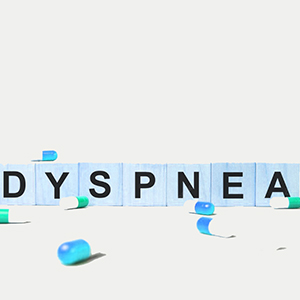Home-based unsupervised pulmonary rehabilitation program improves the respiratory disability in systemic sclerosis patients with dyspnea: an observational prospective study

Submitted: June 21, 2021
Accepted: December 17, 2021
Published: December 28, 2021
Accepted: December 17, 2021
Abstract Views: 1241
PDF: 564
Publisher's note
All claims expressed in this article are solely those of the authors and do not necessarily represent those of their affiliated organizations, or those of the publisher, the editors and the reviewers. Any product that may be evaluated in this article or claim that may be made by its manufacturer is not guaranteed or endorsed by the publisher.
All claims expressed in this article are solely those of the authors and do not necessarily represent those of their affiliated organizations, or those of the publisher, the editors and the reviewers. Any product that may be evaluated in this article or claim that may be made by its manufacturer is not guaranteed or endorsed by the publisher.
Similar Articles
- Andrea Segreti, Sara Mastroberardino, Lorenzo Frau, Alessandro Appetecchia, Luca D’Antonio, Danilo Ricciardi, Gian Paolo Ussia, Francesco Grigioni, Severe heart failure and intracardiac thrombosis: going beyond the appearance for diagnosis and treatments , Monaldi Archives for Chest Disease: Early Access
- Brandon Iturbe Esquivel, José Meneses Calderón, Luis Edgar Concepción Carrillo, Hugo Mendieta Zeron, Rural treatment of COVID-19 patients with pirfenidone, nitazoxanide and colchicine. Case series , Monaldi Archives for Chest Disease: Vol. 93 No. 1 (2023)
- Devika Tayal, Prerna Jain, Mamta Bhardwaj, Amit Sharma, Diabetes mellitus in acute exacerbation of chronic obstructive pulmonary disease – the tip of the iceberg , Monaldi Archives for Chest Disease: Early Access
- Elias F. Porto, Antonio A.M. Castro, Daniela M Fausto, Claudia Kümpel, Ana Denise Brandão, Paula Bernardo de Lima, Jordania C. Fagundes, Brenda Zozimo, Balance impairment and lower limbs strength in patients with COPD who fell in the previous year , Monaldi Archives for Chest Disease: Vol. 92 No. 4 (2022)
- Idir Ramdani, Karen A. Pescatore, Belaid Bouazza, Causes of hospitalization and characteristics of Algerian chronic obstructive pulmonary disease patients in Tizi-Ouzou: a retrospective study , Monaldi Archives for Chest Disease: Vol. 90 No. 3 (2020)
- Gopal Chawla, Ram Niwas, Naveen Dutt, Mukesh Kumar Swamy, Obstructive sleep apnoea with co existent Kleine-Levine syndrome in a middle-aged man , Monaldi Archives for Chest Disease: Vol. 89 No. 3 (2019)
- Gian Francesco Mureddu, Cesare Greco, Stefano Rosato, Paola D'Errigo, Leonardo De Luca, Gabriella Badoni, Pompilio Faggiano, Fulvia Seccareccia, High thrombotic risk increases adverse clinical events up to 5 years after acute myocardial infarction. A nationwide retrospective cohort study , Monaldi Archives for Chest Disease: Vol. 89 No. 3 (2019)
- Claudia Ravaglia, Giovanni Poletti, Carlo Gurioli, Gian Luca Casoni, Alessandra Dubini, Giuseppe Re, Venerino Poletti, Sweet’s syndrome associated with myelogenous leukemia and pulmonary involvement , Monaldi Archives for Chest Disease: Vol. 75 No. 2 (2011): Pulmonary series
- Filippo Brandimarte, Alessandro Battagliese, Silvana Petronilla Pirillo, Maria Teresa Mallus, Rosa Maria Manfredi, Giovanni Carreras, A case of arrhythmogenic right ventricular cardiomyopathy with biventricular involvement , Monaldi Archives for Chest Disease: Vol. 89 No. 1 (2019)
- Orazio Valerio Giannico, Immacolata Ambrosino, Francesco Patano, Cinzia Germinario, Michele Quarto, Anna Maria Moretti, Educational level, marital status and sex as social gender discharge determinants in chronic obstructive pulmonary disease exacerbations: a time-to-event analysis , Monaldi Archives for Chest Disease: Vol. 89 No. 2 (2019)
<< < 45 46 47 48 49 50 51 52 53 54 > >>
You may also start an advanced similarity search for this article.

 https://doi.org/10.4081/monaldi.2021.1984
https://doi.org/10.4081/monaldi.2021.1984





